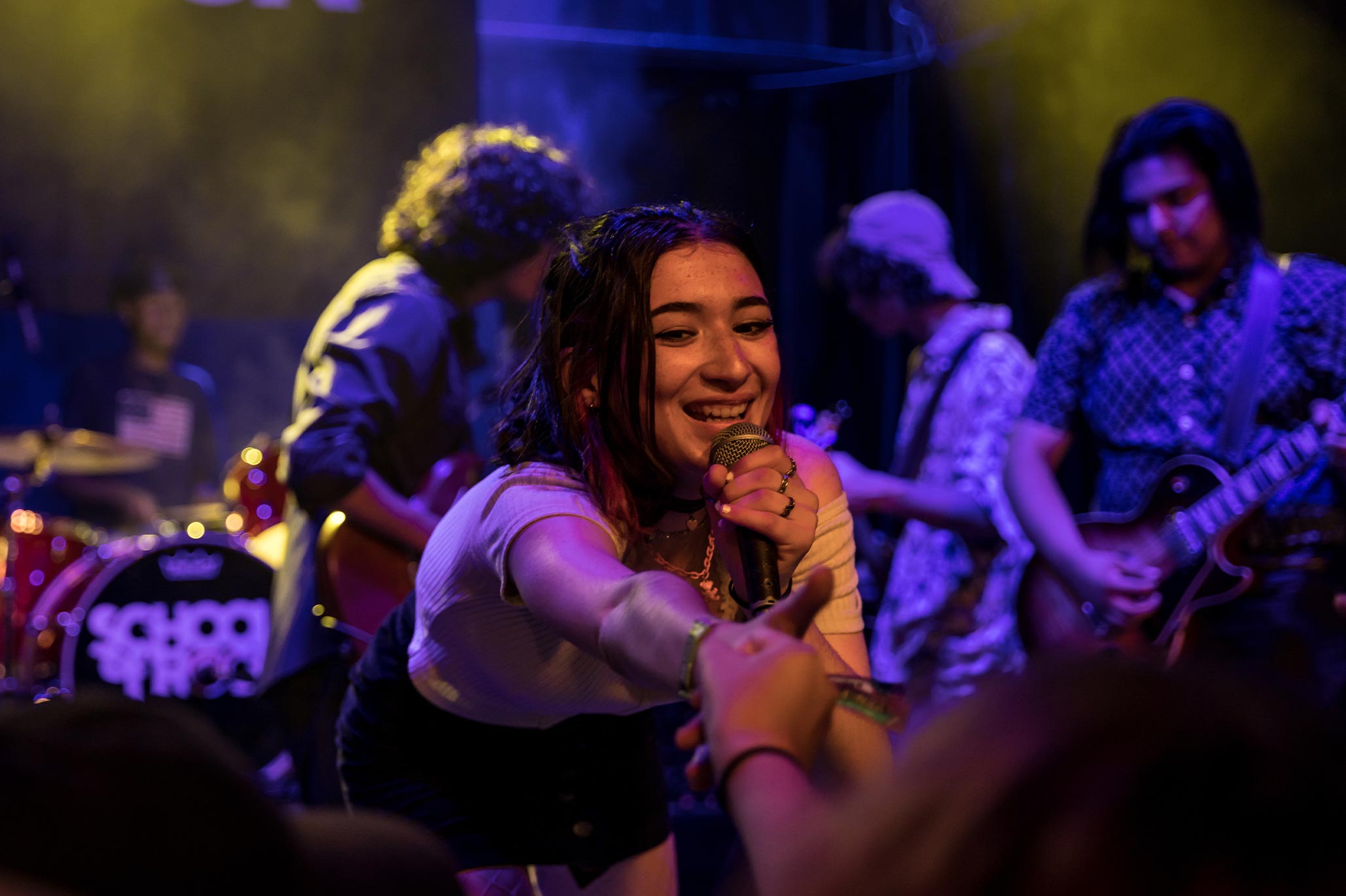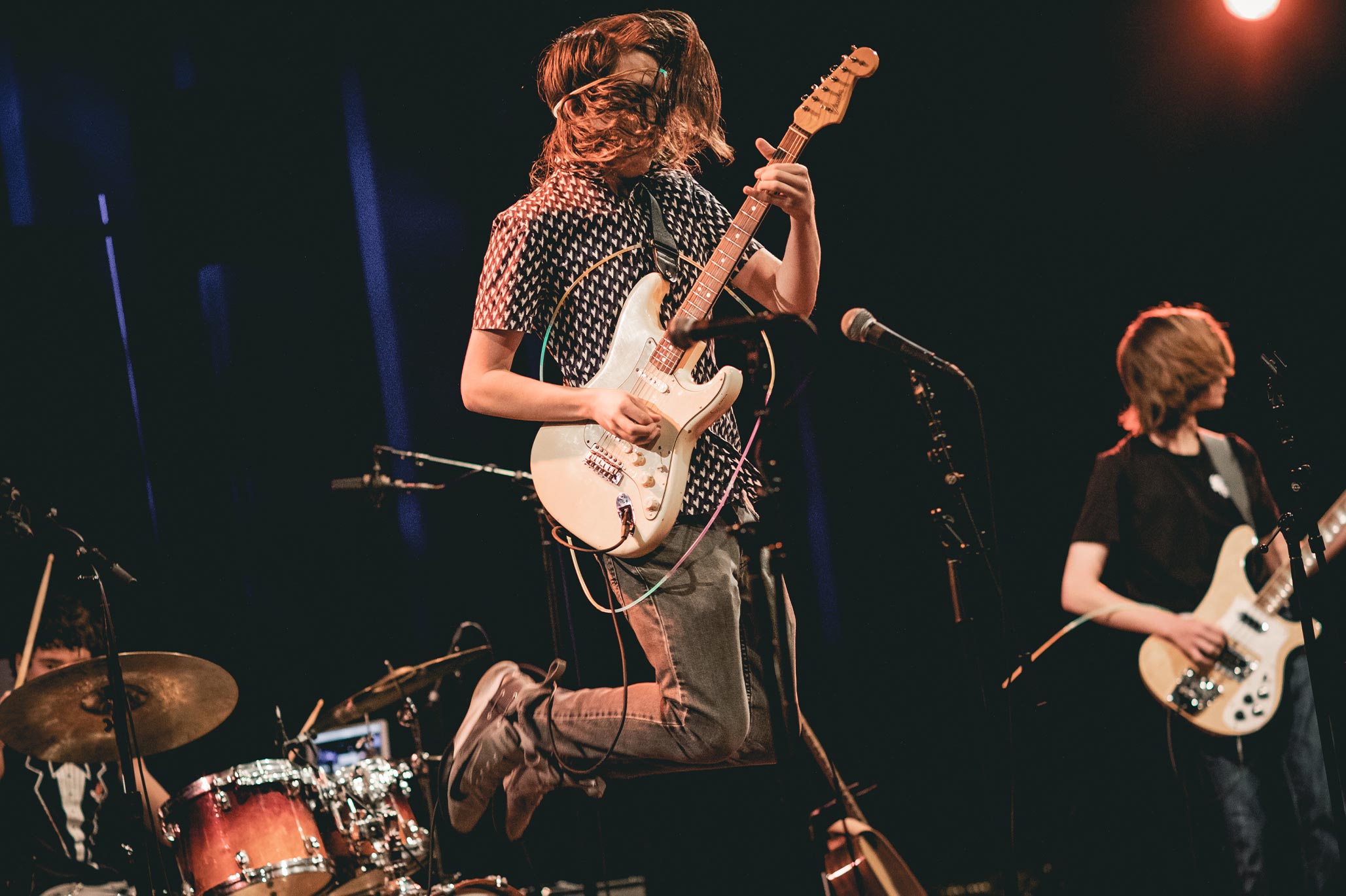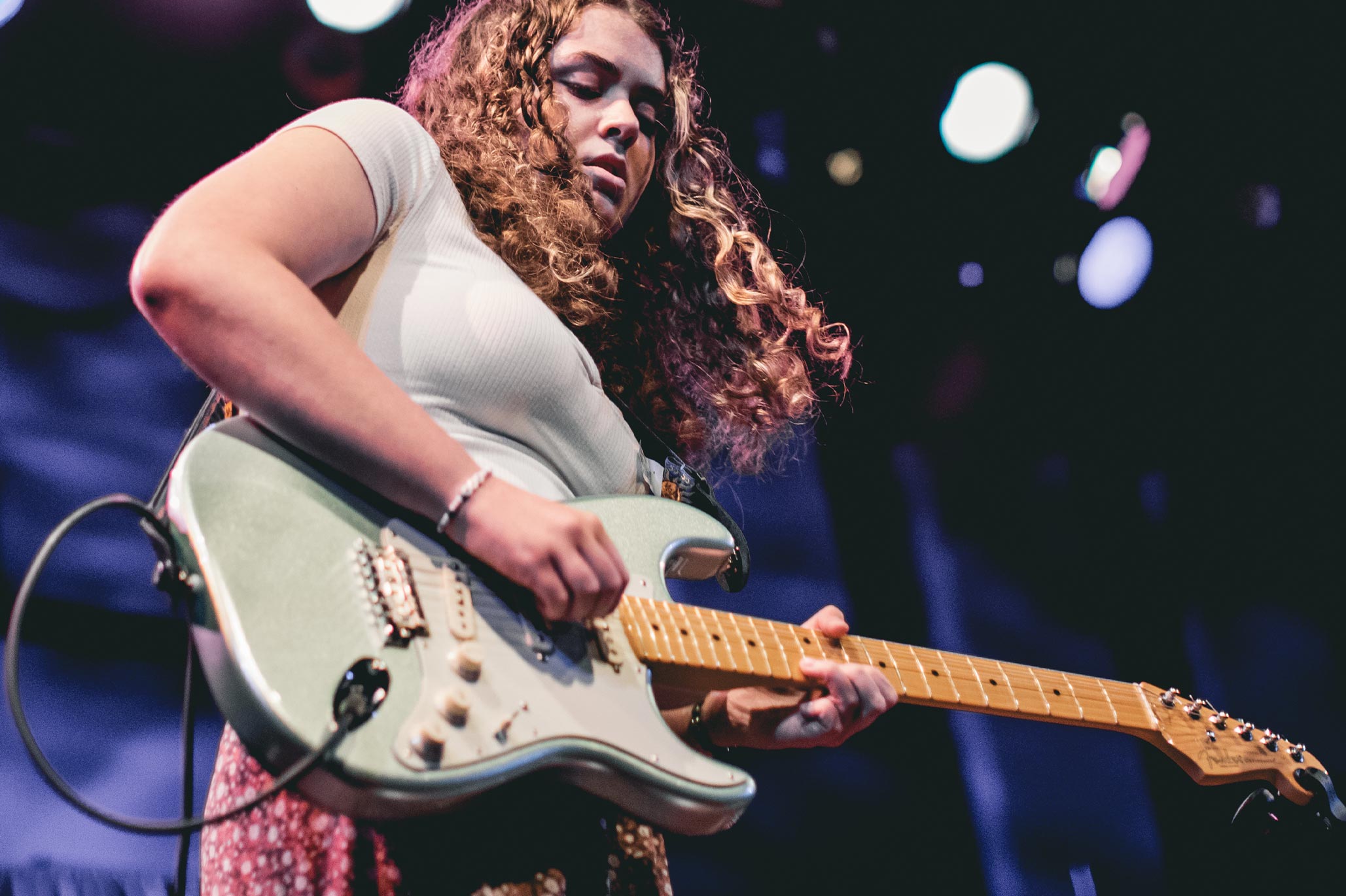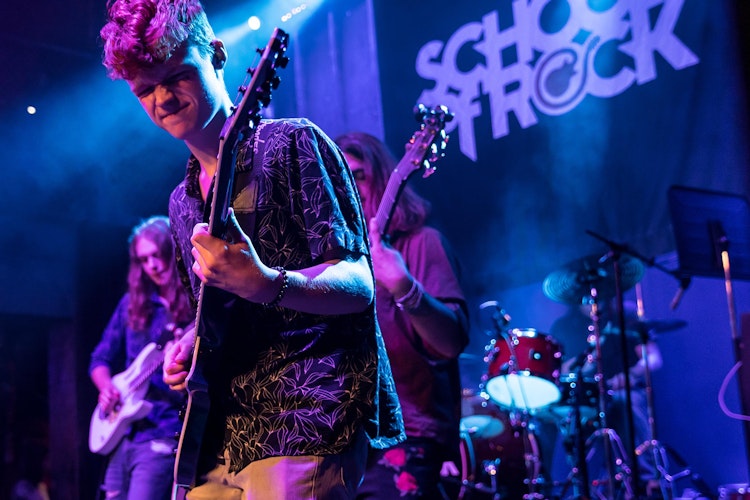What Is Stage Presence?
We tend to think of music as an audio art form, something that we consume with our ears only. But performing live brings with it a visual element as well. The audience hears AND sees you. Stage presence can be thought of as the way that you appear onstage while performing your instrument. This article will discuss the various elements of stage presence, and give suggestions on how YOU can have more of it.
To learn how to have more stage presence, let’s break stage presence down into three parts: Movement, Energy, and Musical Proficiency.

Movement
Although some stages can be smaller than others, there is usually a decent amount of space for moving around. Whether you are standing in one spot and moving your body, or actually walking around the stage while you play, movement is one of the most effective ways to show good stage presence. Just think about all of the different movements a guitar player can make. You can tap your foot to the beat, kick the air during a dramatic part of the song, jump up and down, sway side to side, move your head to the beat (known by heavy metal enthusiasts as headbanging), and even walk around or dance onstage.
One important thing to consider is that movement needs to be big. Depending on the size of the venue, the very back of the audience can be a couple hundred feet away. A football field is 300 feet long. Imagine you are standing in one end zone, watching someone tap their foot in the other team’s endzone. You most likely won’t even notice they are moving. Whatever the movement, make it big and dramatic, as long as you do it safely by being aware of your surroundings. We definitely don’t want to kick a monitor or fall off the stage. It happens! That is why it is super important to have good situational awareness. Know where the other musicians are and where the equipment is onstage in relation to your body. One of the best ways to practice movement is to either record yourself performing or to practice in front of a mirror.
If you are playing guitar or bass, make sure to always be aware of where your cable is in relation to your body. Losing track of the cable can cause you to get tangled up and trip, or have the cable unceremoniously yanked out of the guitar by straying too far from the amp. One popular technique for cable control is to loop the cable through the guitar strap. This helps keep it up and out of the way of your feet, rather than having it just hanging down in front of you.
Whenever you have the room to do so, you should always move forward during a solo. This signals to the audience that their attention should be on you during the solo. If the stage is particularly small or crowded, it may not be appropriate to move around the stage, but there is still a lot you can do from one spot. Go to rock concerts and you will see the soloist almost always moves forward while playing their solo. It is highly recommended to attend as many live concerts as possible. Whether it’s your favorite musician or your friend’s band, go to rock concerts. Studying a good band as an audience member is one of the best ways to learn what works and what doesn’t.

Energy
Energy onstage can best be described as HOW you move while onstage. Sometimes a band with less experience and more energy will be more entertaining than a band with more experience and less energy. Music is about making people feel certain emotions and energy is required to do just that. The way to have more energy onstage is to have more confidence, something that is not always easy to do, especially when you are just starting out. But fear not, for here are some tips and tricks on how to appear confident.
Fake it till you make it. Pretending to be confident, even if you don’t feel very confident, will actually make you appear more confident. The audience will not know you messed up unless you tell them. And we tell them with our body language and facial expressions. Remember that the audience does not know how every part of every song is supposed to go. If you are rocking out with great stage presence, and accidentally mess up (but keep rocking out), the audience usually won’t even notice. But if you show fear or disappointment on your face like a deer in the headlights, it actually directs the attention of the audience straight to you and it will be more obvious that you made a mistake.
*Please remember that mistakes are okay, they are how we learn and grow, and every single famous musician in the world makes them. It takes a lot of courage to perform in front of an audience, and you should never feel bad for making a mistake.
Another great way to improve your stage presence is to record yourself performing. Record at least one song with the camera set up way in the back of the audience area, that way you can get a feel for what it’s like for someone watching your performance from the very back. You may realize that more energy or more movement is required to engage with the audience that is further away from the stage. It is totally natural to feel awkward watching yourself on camera at first, but there is no more honest way of discovering what you truly look and sound like while performing.

Musical Proficiency
With all of this talk about how to have a good stage presence, it is important to remember the main reason why we put on concerts in the first place: to show the audience the music that we have been practicing. Therefore it goes without saying that you must practice your instrument a lot! The more comfortable you are on your instrument, the easier time you will have with stage presence. If you have not committed to regular practice and don’t know your parts that well, your stage presence will suffer greatly. Therefore, it is essential that you learn to play the guitar inside and out or master whatever your instrument may be.
In addition to practicing the music itself, it is also important to practice your stage presence. If you spend months practicing guitar while sitting down in a quiet, air-conditioned room, then playing outdoors at a noisy venue in the hot sun will most likely be extra challenging. It is important to replicate the conditions of your upcoming performance as accurately as possible. For example, if you are going to wear very high heels or large boots to look like a rock star, then take some time to practice while wearing those shoes. You never know what complications may arise in a new setting and it is much better to learn these things before you are in front of an audience.
Last but not least, remember to have fun and enjoy yourself! We PLAY music onstage, we don’t work music. The work is all the practice and preparation that goes into preparing for a live performance. The concert is the time to reap the benefits of your hard work by having fun. Since you have spent so much time and effort getting ready to play in a real live rock concert, make sure that above all else you enjoy yourself. You’ve practiced, you’ve prepared, now go out there and have fun and rock on.
About the Author
Ryan Bobbett has helped create onstage musical cohesion among students at School of Rock Santa Rosa.



